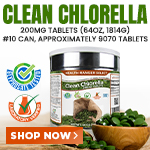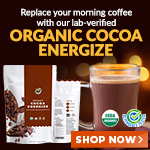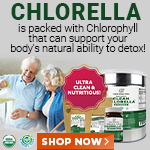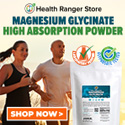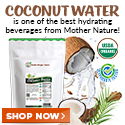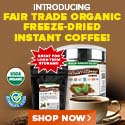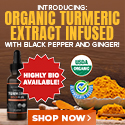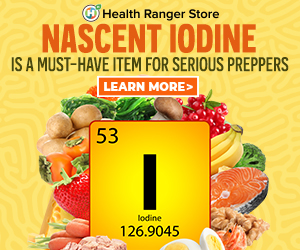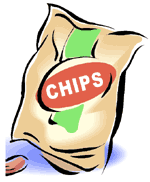
Unsafe snacks? New "Natural" Doritos contains yeast extract
 Wednesday, April 19, 2006 Wednesday, April 19, 2006by Mike Adams, the Health Ranger Editor of NaturalNews.com (See all articles...) Tags: grocery warning, Doritos, natural foods |
- Pfizer faces legal backlash: Texas, Kansas, and more states begin to challenge Prep Act Immunity Shield
- Maple syrup: Nature's golden superfood and its sweet health benefits
- Manufacturing surge under Trump sparks optimism amid concerns over economic strains
- Florida sky mystery: Toxic heavy metals and bioengineered particles found in air and food samples
- Possible biosignatures detected on Exoplanet K2-18b, raising hopes for alien life
- Omega-3s: a powerful ally in the fight against chronic inflammation
- Aerosolized bioweapons? Strange “diploid biomasses” falling out of the sky in Florida captured under the microscope
- HHS Secretary Kennedy will likely investigate the following environmental exposures as CAUSES OF AUTISM and brain damage in children
- U.S. demands U.K. protect FREE SPEECH, repeal hate speech authoritarianism, in latest trade deal negotiations
- Controversy over $400K fund for Texas killer's family sparks outrage: Legal, ethical questions emerge
- Russia escalates censorship war, targets over 200 VPN apps amid Google resistance
- Majority of Americans now favor mass deportation of illegal immigrants, polls show shift in public sentiment
- Analysis: The coming economic collapse, a mass uprising and Trump's three secret weapons to halt the growing revolt
- Trump's bold trade overhaul reaches a crossroads with Italy, as "fair deals" promise sparks global attention
- TAKE IT DOWN Act advances in Congress amid free speech concerns
- Mike Adams releases country western hit single: Goin’ Back in Time is Comin’ Home
- Cruciferous vegetables deliver TRIPLE the heart benefits than previously known, study reveals
- Kava: The Pacific's healing wonder
- Aerosolized bioweapons? Strange “diploid biomasses” falling out of the sky in Florida captured under the microscope
- Analysis: The coming economic collapse, a mass uprising and Trump's three secret weapons to halt the growing revolt
- Widespread social and economic unrest: Steve Quayle issues urgent financial warning of imminent asset collapse in new interview with Mike Adams
- TAKE IT DOWN Act advances in Congress amid free speech concerns
- Israeli lobbyists boast of controlling US national security policy in leaked AIPAC audio
- Kiss Your Genetic Privacy Good-Bye! 23andMe Gets Green Light to Sell Your Intimate Genetic Details to Anyone They Want
- Mike Adams releases country western hit single: Goin’ Back in Time is Comin’ Home
- U.S. lawmakers investigate Meta over alleged China collaboration
- CLOT SHOT PLANDEMIC UNFOLDING: Fibrous, rubbery clots caused by covid injections have prion-like seeding activity
- Fauci is back in the limelight, and he’s busy promoting a future COVID or FLU pandemic
- Defunding DEADLY mRNA jabs: Government funding for mRNA technology being scrutinized and sidelined until proven "safe and effective" for real
- Russia escalates censorship war, targets over 200 VPN apps amid Google resistance
- Curcumin’s ancient healing power supercharges muscle recovery, and its effects are compounded with anti-inflammatory foods and supplements
- I Want My Bailout Money – new song and music video released by Mike Adams
- I Want My Bailout Money – new song released by Mike Adams
- Government waste exposed: Hegseth supports Musk’s demand for accountability from federal workers
- U.S. approves new Russian ambassador as diplomatic thaw continues
- Federal employees whine over DOGE's new directive requiring them to do a 5-point summary of weekly accomplishments
- Newly released JFK files reveal Pentagon's role in creating Lyme disease and covid in the same lab
- Analysis: The coming economic collapse, a mass uprising and Trump's three secret weapons to halt the growing revolt
- Aerosolized bioweapons? Strange “diploid biomasses” falling out of the sky in Florida captured under the microscope
- Kiss Your Genetic Privacy Good-Bye! 23andMe Gets Green Light to Sell Your Intimate Genetic Details to Anyone They Want
- Mike Adams releases country western hit single: Goin’ Back in Time is Comin’ Home
- European Court of Justice: Healthcare professionals who promoted or administered COVID-19 vaccines are CRIMINALLY LIABLE for any harm caused
- Widespread social and economic unrest: Steve Quayle issues urgent financial warning of imminent asset collapse in new interview with Mike Adams
- Federal employees whine over DOGE's new directive requiring them to do a 5-point summary of weekly accomplishments
- U.S. approves new Russian ambassador as diplomatic thaw continues
- CLOT SHOT PLANDEMIC UNFOLDING: Fibrous, rubbery clots caused by covid injections have prion-like seeding activity
- Government waste exposed: Hegseth supports Musk’s demand for accountability from federal workers
- I Want My Bailout Money – new song and music video released by Mike Adams
- I Want My Bailout Money – new song released by Mike Adams
- Fauci is back in the limelight, and he’s busy promoting a future COVID or FLU pandemic
- Defunding DEADLY mRNA jabs: Government funding for mRNA technology being scrutinized and sidelined until proven "safe and effective" for real
- Trump administration poised to overhaul crypto regulations with new SEC leadership
- Now you can HEAR chemistry: Health Ranger translates molecules into music in stunning video demonstration that will blow your mind (and your ears)
- South Carolina Congressman proposes new $250 bill and wants Trump on the front
- Red Cross issues warning to stop blood plasma donations from vaccinated people
- Scientists confirm: GENIUS brain function can be spontaneously unleashed in humans without any apparent cause
- EPA advisor admits the agency is funneling billions to climate groups ahead of Trump’s return to White House
- HYSSOP: What research reveals about the health benefits of this ancient holy herb
- Two containers with completed ballots fall out of truck in Florida
- Newly released JFK files reveal Pentagon's role in creating Lyme disease and covid in the same lab
- Mike Adams releases country western hit single: Goin’ Back in Time is Comin’ Home
- Global leaders unite to clamp down on “misinformation” with UN-backed Cascais Declaration
- BREAKING: 2025 NDAA authorizes mandatory military draft of WOMEN across America… as Pentagon pursues global NUCLEAR war with both Russia and China at the same time
- I Want My Bailout Money – new song released by Mike Adams
- Michael Yon warns of a ZIONIST TAKEOVER in Trump’s second administration
- The Health Ranger releases “Vaccine Zombie” song and music video, using AI-animated zombies for the music video
- Ozempic and Wegovy weight loss drugs are injectable LIZARD VENOM PEPTIDES that may unleash a devastating wave of organ failure… side effects align with symptoms of SNAKE BITES
- BOMBSHELL: DNA testing kits are a SCAM to develop ethnic-specific bioweapons
- Israeli soldiers accused of even more torture and abuse in the West Bank
- These 13 countries just signed an agreement to engineer a global FAMINE by destroying food supply
- RFK Jr. clears key hurdle: Sen. Susan Collins backs controversial HHS nominee, signaling a new era for health policy
- NASA admits that climate change occurs because of changes in Earth’s solar orbit, and NOT because of SUVs and fossil fuels
Yeast extract is a flavor-enhancing additive that many food manufacturers use in place of MSG. The problem is that yeast extract is a hidden source of MSG (monosodium glutamate), according to my sources (see below).
MSG, you may know, is classified as an excitotoxin by Dr. Russell Blaylock, who is a doctor, author, and expert on chemicals that damage the nervous system. MSG is well known to cause migraine headaches, seizures, and other nervous system disorders. Dr. Blaylock's research also shows that MSG damages the endocrine system and causes obesity due to impaired appetite control regulation (causes you to be unable to stop eating).
Doctors and authors who are warning people about yeast extract include Dr. Gary Null, Dr. Julian Whitaker, Dr. George R. Schwartz, Phyllis Balch, Dr. Alexander Mauskop and even the Life Extension Foundation (sources cited below).
Yeast extract is also used in so-called "natural" veggie burger products sold in grocery stores and health food stores. In fact, yeast extract is the No. 1 flavor additive of choice for food manufacturers who don't want to list MSG on their labels. Don't trust the labels that say "all natural" on the front. Read the ingredients and look for yeast extract.
TruthInLabeling.org lists yeast extract as an ingredient that always contains MSG: http://www.truthinlabeling.org/hiddensources.html
Learn the truth about yeast extract and other offensive food additives at Webseed: http://www.webseed.com/yeast_extract.html
Deceptive marketing practices?
What's wrong with Natural Doritos using yeast extract? The problem stems from the fact that the product is labeled "natural" and is positioned in the natural food section in grocery stores. Yet it is made with yeast extract, an ingredient that many doctors, authors and scientists claim may actually be hazardous to the health of you and your children.Because of this, it is my personal opinion that the Frito-Lay company is engaged in deceptive marketing practices by promoting a product as "natural" that admittedly contains yeast extract.
Baby food manufacturers voluntarily removed MSG from their products decades ago after realizing just how damaging MSG is to the brains of infants and young children. So why is Frito-Lay still selling regular Doritos with MSG, and now "Natural" Doritos with yeast extract?
I believe the answer may be because Frito-Lay wants to jump on the "natural" bandwagon with a product that, in my opinion, isn't natural at all. Yeast extract is a manufactured, concentrated ingredient. Calling yeast extract natural is like calling crack cocaine natural because it comes from the coca plant.
DO NOT eat any grocery product containing MSG or yeast extract, and especially avoid allowing children of any age to consume these products. Protecting the health of the brains and nervous systems of our children is extremely important.
REFERENCES:
Another current way food processors are adding glutamate to their products is in the form of autolyzed yeast (sometimes called yeast extract). This substance is less expensive than hydrolyzed protein and has been advertised as a replacement for MSG and hydrolyzed protein. Its MSG content is usually 10% to 20% MSG, but may occasionally be higher. In one chemical company's brochure promoting the use of autolyzed yeast, it was emphasized that when using this substance in meat and poultry products, it can be labeled either as "natural flavoring" or "flavoring."
George R Schwartz MD, In Bad Taste the Msg Syndrome
Health Press , 1998
Page 34
The use of MSG has increased dramatically over the years and has spread to soups, sauces, and salad dressings in restaurants; many canned, frozen, and prepared foods found in local supermarkets; and even cheese, ice cream, cookies, and candy. One form of MSG is autolyzed yeast, which can appear on food product labels as "yeast extract." Other sources of "hidden" MSG include hydrolyzed milk proteins, which may be labeled "sodium caseinate," "calcium caseinate," or "casein."
Phyllis A Balch, Prescription For Dietary Wellness
Penguin Books, 2003
Page 201
MSG may be hidden in calcium and sodium caseinate, gelatin, flavors, seasonings, autolyzed yeast extract, and modified food starch, textured and hydrolyzed proteins, hidden in over 40 food additives.
Joseph B. Marion, Anti-Aging Manual
Information Pioneers, 1999
Page 60
Cheese, smoked fish, yogurt, and yeast extracts contain an ingredient known as tyramine, which has been known to increase susceptibility to migraines. Sodium nitrate, common in cold cuts and frankfurters, is yet another cause.
Gary Null, The Complete Encyclopedia Of Natural Healing: A comprehensive A-Z listing of common and chronic illnesses and their proven natural treatments
Kensington Publishing Corporation, 2001
Page 204
Most processed foods contain excitotoxins, especially any type of commercial taste or flavor enhancer, such as hydrolyzed vegetable protein; soy protein extract; yeast extract; beef stock; commercial soups, sauces, and gravies; caseinate; and aspartame. These excitotoxins may simply be labeled as "natural" flavorings. All processed foods should be avoided by persons with Parkinson's disease.
Life Extension Foundation, Disease Prevention And Treatment
Life Extension Media, 2003
Page 1216
MSG reactions are often misdiagnosed as epileptic seizures. A pet could end up on medication for the rest of his or her life because the veterinarian diagnosed the problem based on the symptoms. If your pet is experiencing seizures there are a couple of things you might do. First, if you are feeding commercial foods, check the label to see if it contains textured protein, yeast extract, hydrolyzed protein, glutamic acid, gelatin, or sodium or calcium caseinate. These substances always contain MSG. Other ingredients that often contain MSG include whey protein, soy protein, soy sauce, carrageenan or vegetable gum, anything fermented, chicken, beef or pork smoke flavorings.
Ann N Martin, Food Pets Die For: Shocking Facts About Pet Food
NewSage Press, 2003
Page 137
MSG is very frequently disguised with such names as sodium caseinate, hydrolyzed yeast, hydrolyzed vegetable protein, and autolyzed yeast. Some of the other names used to disguise MSG are textured protein, hydrolyzed protein, yeast food, calcium caseinate, natural chicken or turkey flavoring, yeast extract, hydrolyzed yeast, natural flavoring, and other spices.
Joe M Elrod, Reversing Fibromyalgia
Woodland Publishing, 1997
Page 102
Here are some of the common "masks" for MSG: Hydrolyzed protein, Sodium caseinate, yeast extract, Yeast nutrient, Autolyzed yeast, Texturized protein, Calcium caseinate.
Alexander Mauskop MD FAAN, The Headache Alternative
Dell Publishing, 1997
Page 67
According to neurosurgeon Russell Blaylock, M.D., author of Excitotoxins, the Taste That Kills, excess glutamate literally excites neurons to death—they run out of energy, degenerate, and die. People who are especially sensitive to MSG have reactions every time they eat it. However, in large enough doses, MSG is neurotoxic to everyone, and it is especially detrimental to young, developing brains. Read food labels carefully. MSG is particularly well disguised and is present in a number of additives, including hydrolyzed vegetable protein, yeast extract, seasonings, natural flavorings, stock, broth, and bouillon.
Dr Julian Whitaker, The Memory Solution
AVERY PUBLISHING GROUP, 1999
Page 80
Often MSG is difficult to avoid, as it also occurs in hydrolyzed vegetable protein, textured vegetable protein, gelatin, yeast extracts, calcium and sodium caseinate, vegetable broth, whey, smoke flavoring, malt extracts, and several other food ingredients—without appearing on the label.
Schuyler W. Lininger, Jr. DC, Editor-in-Chief, The Natural Pharmacy
Prima Health, 1999
Page 80
The best known example is MSG (monosodium glutamate). High blood levels can cross the normally protective blood-brain barrier and can cause brain cells to die. Excitatory amino acids cause problems, mainly when they are used either in high concentrations or in free form. In most natural foods, they are slowly released and therefore harmless. Most processed foods contain excitotoxins, notably any kind of commercial taste or flavor enhancers, such as caseinate, hydrolyzed vegetable protein, soy protein extract, yeast extract, or beef stock. These may be labeled as natural flavoring and are especially prevalent in soups, sauces, and gravies.
Walter Last, The Natural Way to Heal: 65 Ways to Create Superior Health
Hampton Roads Publishing Company , 2004
Page 193
Even though MSG is usually found in packaged (and therefore, labeled) foods, its presence isn't always obvious. Watch for the words "hydrolyzed protein," "autolyzed yeast," "sodium ca-seinate," "yeast extract," "hydrolized oat flour," "texturized protein," or "calcium caseinate"—words that food manufacturers use to quietly announce the presence of MSG without spelling it out. Foods Containing MSG
Alexander Mauskop MD and Barry Fox PhD, What Your Doctor May Not Tell You About Migraines
Warner Books, 2001
Page 110
Grocery warning at FETCH.news
Get independent news alerts on natural cures, food lab tests, cannabis medicine, science, robotics, drones, privacy and more.
 About the author:Mike Adams (aka the "Health Ranger") is a best selling author (#1 best selling science book on Amazon.com) and a globally recognized scientific researcher in clean foods. He serves as the founding editor of NaturalNews.com and the lab science director of an internationally accredited (ISO 17025) analytical laboratory known as CWC Labs. There, he was awarded a Certificate of Excellence for achieving extremely high accuracy in the analysis of toxic elements in unknown water samples using ICP-MS instrumentation. Adams is also highly proficient in running liquid chromatography, ion chromatography and mass spectrometry time-of-flight analytical instrumentation.
About the author:Mike Adams (aka the "Health Ranger") is a best selling author (#1 best selling science book on Amazon.com) and a globally recognized scientific researcher in clean foods. He serves as the founding editor of NaturalNews.com and the lab science director of an internationally accredited (ISO 17025) analytical laboratory known as CWC Labs. There, he was awarded a Certificate of Excellence for achieving extremely high accuracy in the analysis of toxic elements in unknown water samples using ICP-MS instrumentation. Adams is also highly proficient in running liquid chromatography, ion chromatography and mass spectrometry time-of-flight analytical instrumentation.
Adams is a person of color whose ancestors include Africans and Native American Indians. He's also of Native American heritage, which he credits as inspiring his "Health Ranger" passion for protecting life and nature against the destruction caused by chemicals, heavy metals and other forms of pollution.
Adams is the founder and publisher of the open source science journal Natural Science Journal, the author of numerous peer-reviewed science papers published by the journal, and the author of the world's first book that published ICP-MS heavy metals analysis results for foods, dietary supplements, pet food, spices and fast food. The book is entitled Food Forensics and is published by BenBella Books.
In his laboratory research, Adams has made numerous food safety breakthroughs such as revealing rice protein products imported from Asia to be contaminated with toxic heavy metals like lead, cadmium and tungsten. Adams was the first food science researcher to document high levels of tungsten in superfoods. He also discovered over 11 ppm lead in imported mangosteen powder, and led an industry-wide voluntary agreement to limit heavy metals in rice protein products.
In addition to his lab work, Adams is also the (non-paid) executive director of the non-profit Consumer Wellness Center (CWC), an organization that redirects 100% of its donations receipts to grant programs that teach children and women how to grow their own food or vastly improve their nutrition. Through the non-profit CWC, Adams also launched Nutrition Rescue, a program that donates essential vitamins to people in need. Click here to see some of the CWC success stories.
With a background in science and software technology, Adams is the original founder of the email newsletter technology company known as Arial Software. Using his technical experience combined with his love for natural health, Adams developed and deployed the content management system currently driving NaturalNews.com. He also engineered the high-level statistical algorithms that power SCIENCE.naturalnews.com, a massive research resource featuring over 10 million scientific studies.
Adams is well known for his incredibly popular consumer activism video blowing the lid on fake blueberries used throughout the food supply. He has also exposed "strange fibers" found in Chicken McNuggets, fake academic credentials of so-called health "gurus," dangerous "detox" products imported as battery acid and sold for oral consumption, fake acai berry scams, the California raw milk raids, the vaccine research fraud revealed by industry whistleblowers and many other topics.
Adams has also helped defend the rights of home gardeners and protect the medical freedom rights of parents. Adams is widely recognized to have made a remarkable global impact on issues like GMOs, vaccines, nutrition therapies, human consciousness.
In addition to his activism, Adams is an accomplished musician who has released over a dozen popular songs covering a variety of activism topics.
Click here to read a more detailed bio on Mike Adams, the Health Ranger, at HealthRanger.com.
Take Action: Support Natural News by linking to this article from your website
Permalink to this article:
Embed article link: (copy HTML code below):
Reprinting this article:
Non-commercial use OK, cite NaturalNews.com with clickable link.
Follow Natural News on Facebook, Twitter, Google Plus, and Pinterest
Science News & Studies
Medicine News and Information
Food News & Studies
Health News & Studies
Herbs News & Information
Pollution News & Studies
Cancer News & Studies
Climate News & Studies
Survival News & Information
Gear News & Information
News covering technology, stocks, hackers, and more



"Big Tech and mainstream media are constantly trying to silence the independent voices that dare to bring you the truth about toxic food ingredients, dangerous medications and the failed, fraudulent science of the profit-driven medical establishment.
Email is one of the best ways to make sure you stay informed, without the censorship of the tech giants (Google, Apple, Facebook, Twitter, YouTube, etc.). Stay informed and you'll even likely learn information that may help save your own life."
–The Health Ranger, Mike Adams













